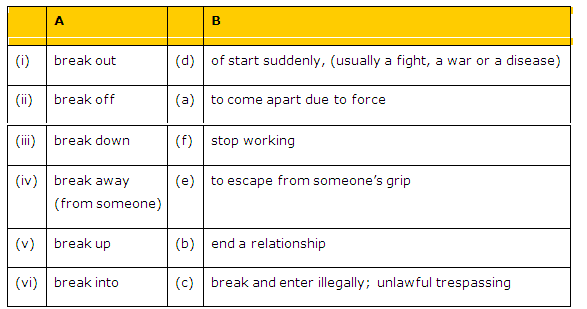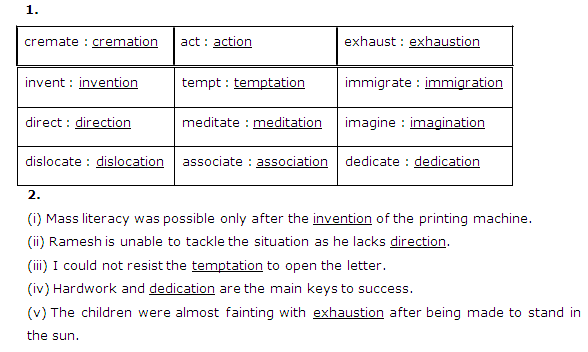Class 9 NCERT Solutions English Chapter 10 - Kathmandu
Kathmandu Exercise 132
Solution 1
2. 'All this' refers to the author buying a bar of marzipan, a corn-on-the-cob roasted in a charcoal stove on the pavement (rubbed with salt, chilli powder and lemon), a couple of love story comics, and a Reader's Digest.
3. Vikram Seth compares the fifty or sixty bansuris protruding in all directions from the pole with an attachment on top that is held by the flute seller to the quills of a porcupine.
4. The five kinds of flutes are the reed neh, the Japanese shakuhachi, the deep bansuri of Hindustani classical music, the clear or breathy flutes of South America, and the high-pitched Chinese flutes.
Solution 2
1. The author notes that the flute seller selected a flute from time to time and played it for a few minutes. The sound rose clearly above the noise of the traffic and the hawkers' cries. While the flute seller played slowly, meditatively, and without excessive display, the hawkers shouted out their wares.
2. At Pashupatinath, there is a small shrine that protrudes from the stone platform on the river bank. The belief is that when it emerges fully, the goddess inside will escape, and the evil period of Kaliyug will end on earth.
3.
(i) The author has drawn powerful images and pictures of the atmosphere of 'febrile confusion' outside the temple of Pashupatinath. There are so many worshippers that some people trying to get the priest's attention were elbowed aside by others pushing their way to the front.By the main gate, a party of saffron-clad Westerners struggled for permission to enter as only Hindus were allowed to enter the temple.A fight broke out between two monkeys. One was chasing the other, who jumped onto a shivalinga, then ran screaming around the temples and down to the river, the holy Bagmati.
(ii) He saw that the Baudhnath Stupa had an immense white dome, which was ringed by a road. Small shops were there on the outer edge where felt bags, Tibetan prints and silver jewellery could be bought. There were no crowds there. On the busiest streets of Kathmandu, he saw fruit sellers, flute sellers, hawkers of postcards, shops selling Western cosmetics, film rolls, chocolate, copper utensils and Nepalese antiques.
(iii) The sounds he heard were film songs that were blaring out from the radios, car horns, bicycle bells, stray cows lowing, vendors shouting out their wares. He also listened to flute music, calling it the most universal and most particular of sounds.
Solution 3
2. Along Kathmandu's narrowest and busiest streets, there were small shrines and flower-adorned deities. Apart from these, there were fruit sellers, flute sellers, hawkers of postcards, shops selling Western cosmetics, film rolls, chocolate, copper utensils and Nepalese antiques. The author heard film songs that were blaring out from the radios, sounds of car horns and bicycle bells, stray cows lowing questioningly at motorcycles, vendors shouting out their wares. He also saw a flute seller with many bansuris. He contrasts the serene music produced by the flute seller with the cries of the hawkers.
3. The author considers flute music to be "the most universal and most particular" of all music. There is no culture that does not have its flute. Each kind of flute has a specific fingering and compass, and "weaves its own associations". Still, for the author, to hear any flute is "to be drawn into the commonality of all mankind to be moved by music closest in its phrases and sentences to the human voice. In spite of their differences, every flute produces music with the help of the human breath. Similarly, in spite of the differences in caste, culture, religion, region, language all human beings are the same, with the same living breath running through all of them.
Kathmandu Exercise 133
Solution 1

Solution 2

Solution 3

Kathmandu Exercise 134
Solution 4
(i) The heart is a pump that sends the blood circulating through our
body. The pumping action takes place when the left ventricle of the
heart contracts. This forces the blood out into the
arteries, which expands to receive the oncoming blood.
(ii) The African lungfish can live without water for up to four years. During drought,
it digs a pit and encloses itself in a capsule of slime and
earth, leaving a tiny opening for air. The capsule dries and
hardens, but when rain comes, the mud dissolves and the lungfish swims away.
(iii) Mahesh : We have to organise a class party for our teacher. Does anyone play
an instrument?
Vipul : Rohit plays the flute.
Mahesh : Does he also act?
Vipul : No, he composes music
Mahesh : That’s wonderful !
